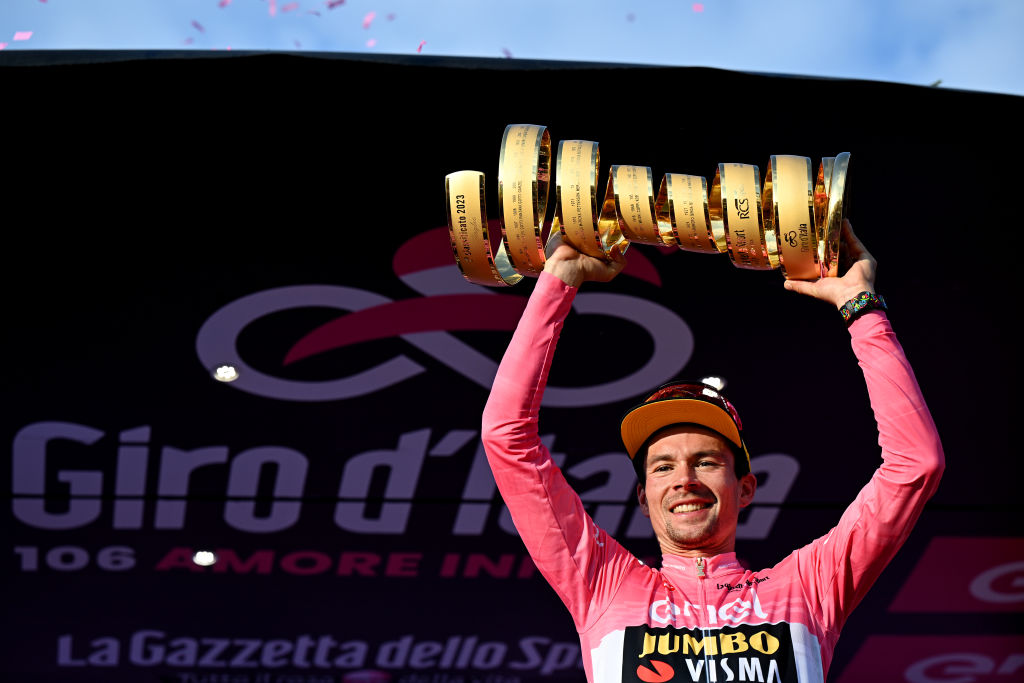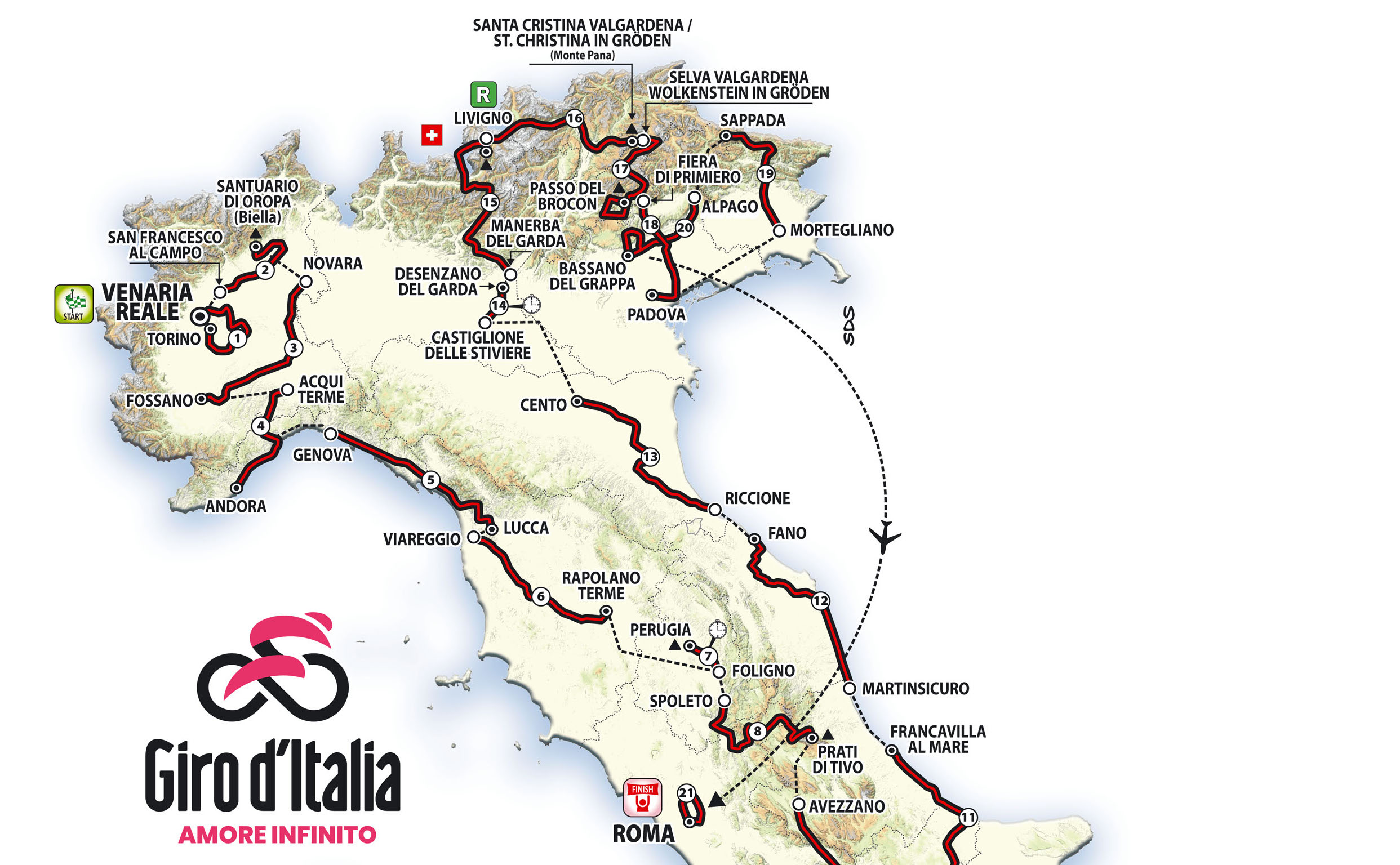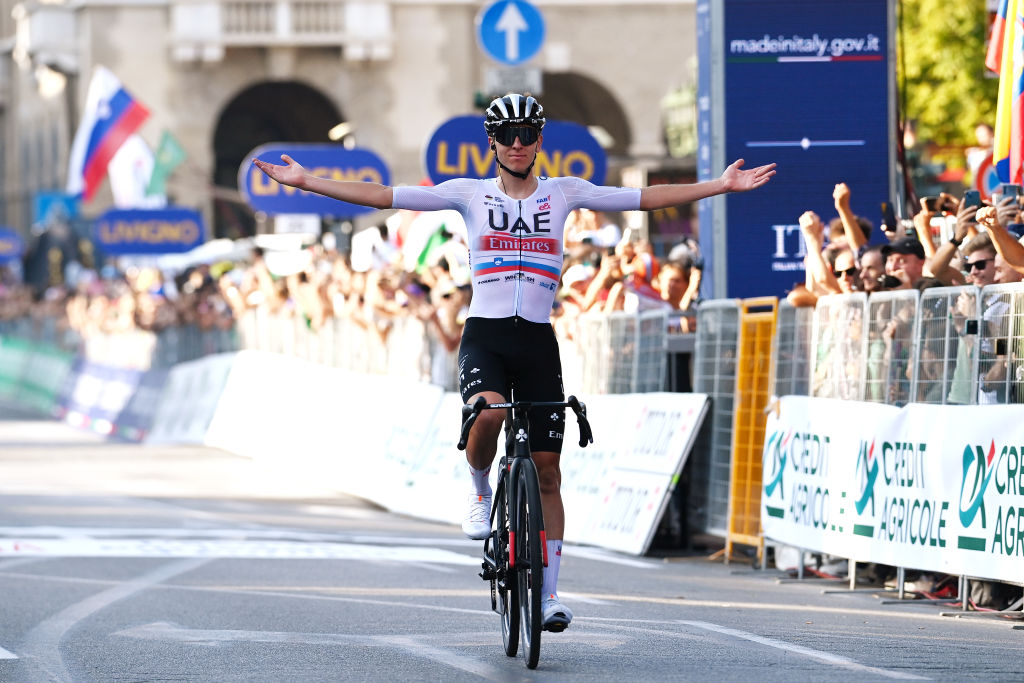Less can be more as Giro d’Italia tries a shift in emphasis – Analysis
Revamped route an attempt to convince Pogačar to try Giro-Tour double

It was clear that something needed to change. The past two editions of the Giro d’Italia produced late twists on the penultimate stage, but on neither occasion did the dramatic denouement feel like an adequate pay-off for the long waiting game that preceded it.
The final week of the Giro has always played host to its most demanding stages – witness Fausto Coppi and Hugo Koblet on the Stelvio in 1953, for instance, or Alex Zülle’s collapse at Marco Pantani’s expense in 1998. But in recent years, it was hard to escape that the sense that an increasingly backloaded race was losing its balance.
Cramming the toughest climbs into the final days was one way of guaranteeing suspense deep into the Giro, but it was an act of engineering with an obvious structural flaw. The sheer difficulty of the third week was making overall contenders understandably reticent to go on the offensive earlier in the race.
The first two-thirds of the Giro, with the exception of the occasional set-piece time trial or hilltop finish, became an exercise in conserving energy for the GC men. Witness the stalemate at Gran Sasso d’Italia in 2023 or the inertia of the race’s second week, where the gaps between eventual podium finishers Geraint Thomas (Ineos Grenadiers), Primoz Roglic (Jumbo-Visma) and João Almeida (UAE Team Emirates) didn’t change by so much as a second. And even in the redoubtable third week itself, the succession of imposing mountain passes often served more to inhibit attacking than to inspire it.
The 2024 Giro route, presented in Trento on Friday evening, marks a change from recent editions, with director Mauro Vegni seeking to distribute the key stages across the entire race rather than hoarding them for the final week, and the overall volume of climbing has also been lowered considerably.
“That was the intention,” Vegni admitted. “In the past, we saw having such a difficult final week wasn’t allowing the riders to express themselves fully during the first two weeks, so we have tried to create a course that has climbs from the first week, and that also features more manageable climbs in the third week. And in total, we have about 20% less climbing than we did last May.”
In 2023, there were some 51,300m of total climbing on the Giro route. Next May, there will be ‘only’ 42,900m of climbing across the race’s 3,321km. In 2023, the final week included two stages with more than 5,000m of climbing and one with just under 4,000m, not to mention a severe mountain time trial.
The latest race content, interviews, features, reviews and expert buying guides, direct to your inbox!
The final week in 2024 is still tough, of course, with three days featuring more than 4,000m of climbing, but the last summit finish comes at Passo Brocon on stage 17. Vegni will doubtless hope the rugged stage 19 to Sappada and the twin ascents of Monte Grappa on stage 20 will offer scope for invention as well as the usual test of endurance.
Fast start

There has already plenty of invention in the construction of this Giro route, including Vegni’s calculated risk of including a summit finish on the very first weekend, with the race climbing to Oropa on stage 2. Coming 24 hours after an explosive opening stage around Turin, the ascent will certainly spark a selection, but for all the mystique of Pantani’s 1999 triumph, its slopes shouldn’t provoke insurmountable gaps among the men with designs on overall victory.
The variety that follows in the opening phase of the race might act as a safeguard, starting with the foray onto gravel roads for on stage 6 to Rapolano Terme, which offers a taste of Strade Bianche rather than a full-blown attempt at replicating the race. The gruppo will tackle 12km of gravel here rather than the 35km they encountered en route to Montalcino in 2021. “It’s just the right amount for the first week,” Vegni insisted.
It remains to be seen if Vegni has included the right amount of time trialling on his route, and much will depend, of course, on who eventually takes the start in Venaria Reale. A year ago, RCS Sport put some 70km of time trialling on the course in a (successful) bid to encourage Remco Evenepoel’s participation, and there is again plenty for the rouleurs again here, starting with the 37.2km test to Perugia on stage 7.
The flat and fast time trial to Desenzano del Garda on stage 14 brings the total distance against the watch to some 68km, which is itself another calculated kind of risk. Consider, for instance, the damage Jonas Vingegaard wrought on the 2024 Tour de France in the short time trial to Combloux. Vegni might be heartened, however, by the experience of 2017, where Tom Dumoulin forged overall victory in the Montefalco time trial without divesting the race of its suspense.
And yet, for all that this is a ‘lighter’ Giro than those of the recent past, the mountains should again be the final arbiter. The aim of the course, as Vegni suggested, is to bring the GC men out of their shells early and often. In that light, stage 9 to Prati di Tivo seems to offer more of a springboard to attackers than 2023’s headwind-blasted haul up Gran Sasso d’Italia.
The aforementioned Lake Garda time trial means that week two is already sure to provide some manner of tiebreaker among the maglia rosa contenders, but the Bocca della Selva summit finish on stage 10 and, of course, the tappone to Livigno on stage 15 should also provoke the kind of separation that was so lacking in the middle week this past year.
The scaled-back final week still hits plenty of the usual high notes, including the Stelvio – weather conditions on the Cima Coppi permitting, of course – and back-to-back summit finishes on Monte Pana and the Passo Brocon. The flat run to Padua offers a little respite and the run-in to Sappada on stage 19 sparks intrigue, while the double climb of Monte Grappa still provides scope for drama on the penultimate day.
Pogačar

The more balanced 2024 route is not, however, simply an effort to spread the key moments across the entire Giro rather than clump them together in the final days. It is also an exercise in trying to persuade the world’s best riders – Tadej Pogacar, above all others – to attempt the Giro-Tour double. Or, as Tuttobici’s headline after the presentation put it: “Yes, but who’s riding?”
The modern Giro has leaned heavily into its tagline as “the toughest race in the world's most beautiful place,” and often with good reason. The race enjoyed a remarkable sequence of editions between 2014 and 2018, for instance, with the Giro routinely outstripping the Tour for excitement and intrigue.
In the last five years, however, the Giro has struggled to convince riders of the merits of tackling the race in tandem with the Tour. Alberto Contador (2015) and Chris Froome (2018) were the last Giro winners to go on and ride the Tour, and both men were left short in July after their efforts at the corsa rosa had exhausted their reservoirs.
Vegni knew that if he wanted to convince Pogačar – or Evenepoel (Soudal-QuickStep), Jonas Vingegaard (Jumbo-Visma) and defending champion Primoz Roglic, for that matter – to ride the 2024 Giro, then he would need to tailor the demands of his race accordingly. Friday’s presentation was only one step in an ongoing diplomatic process. “We’re working on it,” Vegni said when asked about the likely start list.

Barry Ryan was Head of Features at Cyclingnews. He has covered professional cycling since 2010, reporting from the Tour de France, Giro d’Italia and events from Argentina to Japan. His writing has appeared in The Independent, Procycling and Cycling Plus. He is the author of The Ascent: Sean Kelly, Stephen Roche and the Rise of Irish Cycling’s Golden Generation, published by Gill Books.